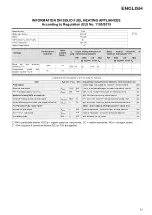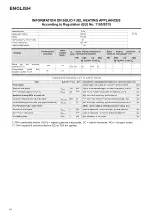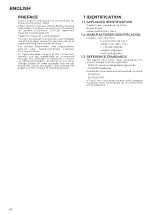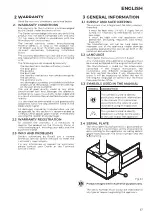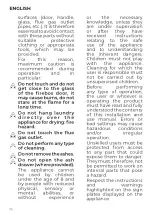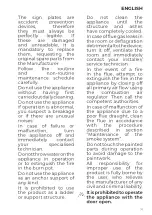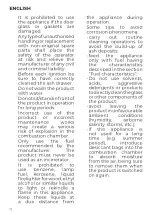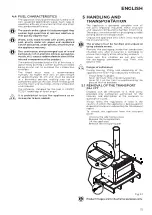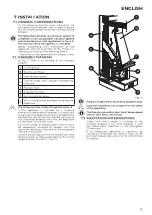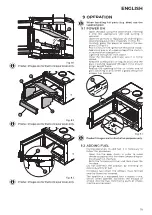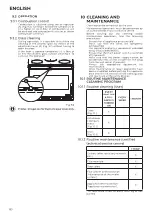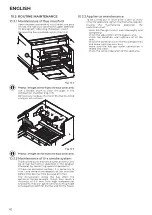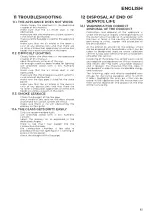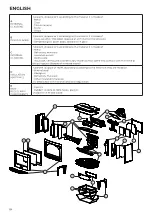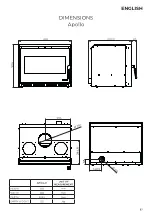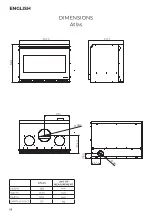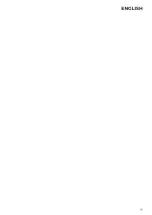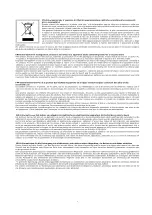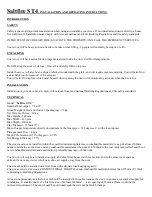
77
ENGLISH
Correct installation of the fume duct between the
appliance and the fireplace must be watertight,
sealing all the linking joints (B, C - Fig. 7.5) with
material suitable for high temperatures.
Imperfect sealing may compromise the safety of
the appliance and its performance.
The chimney cowl must be of the windproof type
with internal section equivalent to the one of
chimney and the passage section of the exhaust
smoke at least twice the one inside the flue pipe.
Do not insert draught butterfly regulator
diaphragms in the fitting.
In case of excessive draught (above 20 Pa), a
draught regulator can be inserted. Excessive
draught reduces the possibility of flame
regulation by decreasing the efficiency of the
product.
7.7 AIR INTAKE
The appliance must have the right flow of
combustion air to guarantee proper combustion.
There must be an outside air intake to guarantee
the flow of combustion air to the appliance and/
or recirculation of the ambient air.
The outside air intake must be correctly sized and
protected by an insect screen. A non-closable
permanent protection grille must be placed
externally; in areas that are particularly windy
and exposed to weathering, install a rain and
wind protection.
Make sure the air intake is positioned so that it is
not accidentally obstructed.
If the rear wall of the appliance is an external
wall, make a hole to extract the combustion air
20-30 cm from the ground, observing the size
indications indicated in “Techincal data”.
If it is not possible to create the fresh air intake
in the room, an external hole can be created in
an adjacent room provided it is permanently
interconnected by means of a transfer grille.
If there are other heating or extraction appliances
in the installation room, combustion malfunctions
may occur due to a lack of combustion air. The
combustion air intakes must therefore be sized
correctly, in order to ensure the necessary supply
of air for the correct operation of all devices.
It is prohibited to withdraw combustion air from
a garage, warehouse containing combustible
materials or rooms at risk of fire.
In accordance with local regulations in force,
there are three possible configurations for the
combustion air intake:
• Fig. 7.6: external air intake (C) channelled to
the fire box. Lower grate (A) supplied for the
recirculation of ambient air on the cladding;
• Fig. 7.7: air intake (F) on the cladding, channelled
to the hearth. Lower grate (A) supplied on the
cladding and wall hole (B) for the recirculation
of ambient air.
• Fig. 7.8: lower grille (A) provided in the cladding
and external air intake (B) for the recirculation
of ambient air to be created inside or outside
the cladding.
Product images are for illustrative purposes only.
Product images are for illustrative purposes only.
Product images are for illustrative purposes only.
The insert features, on the back, a pipe (D) for the
combustion air inlet.
On the top part of the cladding, it is necessary
to place the heat recovery grille (E), not supplied.
E
D
A
C
Fig. 7.6
E
D
F
A
B
Fig. 7.7
E
D
A
B
Fig. 7.8

